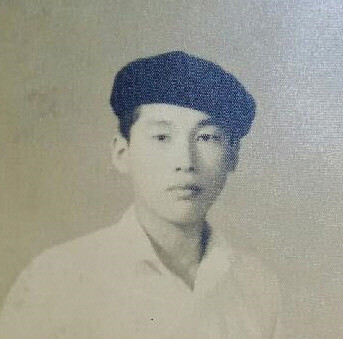hankyoreh
Links to other country sites 다른 나라 사이트 링크
Falsified military records on the Gwangju Democratization Movement

From the time of the May 1980 Gwangju Democratization Movement, distortions were carefully orchestrated by the military administration. A typical example of fabrications intended to paint the movement as a “rebellion” can be found in the claims of ambushes on Gwangju Detention Center.
The administration falsely claimed that the citizens’ militia ambushed the detention center in the Gakhwa neighborhood of Gwangju’s Buk (North) District four to seven times between May 21 and 23, 1980. Yu Yeong-seon, who was 27 at the time, is a person of merit in connection with May 1980 who was implicated in the “prison ambush” claims. On May 21, 1980, Yu suffered a bullet wound to the head and was taken to Kwangju Christian Hospital after martial law forces opened fire in front of the South Jeolla Provincial Office. His name is included on a list of hospitalized patients compiled by the hospital the same day; the treatment log described his condition as “semi-coma.” Based on the fact that his medication administration records only continue until May 23, he is believed to have died on that day.

But a document titled “Attempted Gwangju Detention Center Ambush” drafted by a South Jeolla Province joint investigation team shortly after the events of May 1980 states that Yu died while attempting an ambush on the prison to free his older brother, who was imprisoned there at the time on charges of violating the National Security Act. His postmortem records report him as having died in the vicinity of the YWCA during the martial law forces’ suppression operation on May 27.
The fabricated claims of an ambush on the detention center continued through the Gwangju Incident Investigation Committee (also known as the 1980 Committee) established in 1985 as an organization distorting the events of May 1980 for the military administration, and through the National Assembly Special Countermeasures Committee (5/11 Research Committee) in 1988 -- by which time they were being treated as ironclad fact.
The 1980 Committee was a pan-governmental organization created under the leadership of the Agency for National Security Planning (former KCIA) after an incident in 1985 in which university students occupied the US Cultural Center in Seoul to demand an investigation of the events of May 1980.

The 5/11 Research Committee was established on May 11, 1988, to prepare for an attempt to hold Gwangju hearings at a time when the administration held a minority in the National Assembly. According to records related to the committee acquired in 2017 by a special Ministry of National Defense committee investigating May 1980, anticipated questions and responses were discussed ahead of time by then martial law commander Lee Hee-seong and special forces commander Jeong Ho-yong.
According to the document, they were instructed to respond to questions about whether the claims of prison attacks by demonstrators were fabricated by maintaining that “operational logs and related documents indicate that six attacks took place, and martial law forces defended Gwangju Detention Center to prevent the situation from deteriorating.”
The information serving as a basis for the response had already been fabricated by the 1980 Committee, including the new drafting in 1985 of an operational report for the 3rd Special Forces Brigade that provided a foundation for the “prison ambush” claims. Following their use by the 5/11 Committee, the fabricated prison ambush records have continued to be used to this day as a basis for distortions of the events of May 1980 by figures such as conservatives commentators Ji Man-won and Kim Dae-ryeong (pen name).
By Kim Yong-hee, Gwangju correspondent
Please direct comments or questions to [english@hani.co.kr]

Editorial・opinion
![[Editorial] Penalties for airing allegations against Korea’s first lady endanger free press [Editorial] Penalties for airing allegations against Korea’s first lady endanger free press](https://flexible.img.hani.co.kr/flexible/normal/500/300/imgdb/original/2024/0502/1817146398095106.jpg) [Editorial] Penalties for airing allegations against Korea’s first lady endanger free press
[Editorial] Penalties for airing allegations against Korea’s first lady endanger free press![[Editorial] Yoon must halt procurement of SM-3 interceptor missiles [Editorial] Yoon must halt procurement of SM-3 interceptor missiles](https://flexible.img.hani.co.kr/flexible/normal/500/300/imgdb/child/2024/0501/17145495551605_1717145495195344.jpg) [Editorial] Yoon must halt procurement of SM-3 interceptor missiles
[Editorial] Yoon must halt procurement of SM-3 interceptor missiles- [Guest essay] Maybe Korea’s rapid population decline is an opportunity, not a crisis
- [Column] Can Yoon steer diplomacy with Russia, China back on track?
- [Column] Season 2 of special prosecutor probe may be coming to Korea soon
- [Column] Park Geun-hye déjà vu in Yoon Suk-yeol
- [Editorial] New weight of N. Korea’s nuclear threats makes dialogue all the more urgent
- [Guest essay] The real reason Korea’s new right wants to dub Rhee a founding father
- [Column] ‘Choson’: Is it time we start referring to N. Korea in its own terms?
- [Editorial] Japan’s rewriting of history with Korea has gone too far
Most viewed articles
- 160% of young Koreans see no need to have kids after marriage
- 2Presidential office warns of veto in response to opposition passing special counsel probe act
- 3Anti-immigration candidate marauds across Korea with squad detaining foreigners
- 4[Editorial] Penalties for airing allegations against Korea’s first lady endanger free press
- 5Hybe-Ador dispute shines light on pervasive issues behind K-pop’s tidy facade
- 6Months and months of overdue wages are pushing migrant workers in Korea into debt
- 7S. Korea “monitoring developments” after report of secret Chinese police station in Seoul
- 8[Column] Unsettling moves by the UN Command lay way for Korean involvement in Taiwan
- 9Japan says it’s not pressuring Naver to sell Line, but Korean insiders say otherwise
- 10Alleged drug use by Korean A-listers rocks nation – but not for the first time